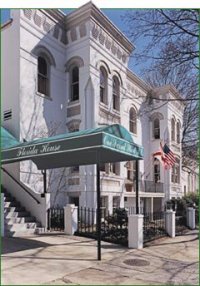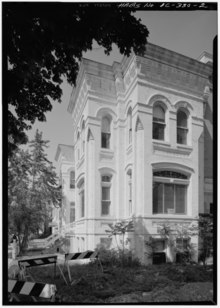
Washington, D.C., formally the District of Columbia and commonly called Washington or D.C., is the capital city and the federal district of the United States. The city is located on the east bank of the Potomac River, which forms its southwestern border with Virginia and borders Maryland to its north and east. Washington, D.C. was named for George Washington, a Founding Father, victorious commanding general of the Continental Army in the American Revolutionary War and the first president of the United States, who is widely considered the "Father of his country". The district is named for Columbia, the female personification of the nation.

John Luigi Mica is an American businessman, consultant and Republican politician who represented Florida's 7th congressional district in the U.S. House of Representatives from 1993 to 2017. He was defeated by Democrat Stephanie Murphy in the November 8, 2016, general election while serving his 12th term in office.
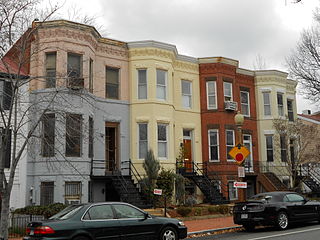
Capitol Hill is the largest historic residential neighborhood in Washington, D.C., stretching easterly in front of the United States Capitol along wide avenues. It is one of the oldest residential neighborhoods in Washington, D.C., and, with roughly 35,000 people in just under 2 square miles (5 km2), it is also one of the most densely populated. The name is also frequently used as a metonym for the United States Congress.

Thomas Ustick Walter was the dean of American architecture between the 1820 death of Benjamin Latrobe and the emergence of H.H. Richardson in the 1870s. He was the fourth Architect of the Capitol and responsible for adding the north (Senate) and south (House) wings and the central dome that is predominantly the current appearance of the U.S. Capitol building. Walter was one of the founders and second president of the American Institute of Architects. In 1839, he was elected as a member to the American Philosophical Society.

Embassy Row is the informal name for a section of Northwest Washington, D.C., with a high concentration of embassies, diplomatic missions, and diplomatic residences. It spans Massachusetts Avenue N.W. between 18th and 35th street, bounded by Scott Circle to the south and the United States Naval Observatory to the north; the term is often applied to nearby streets and neighborhoods that also host diplomatic buildings, such as Kalorama.

Northwest is the northwestern quadrant of Washington, D.C., the capital of the United States, and is located north of the National Mall and west of North Capitol Street. It is the largest of the four quadrants of the city, and it includes the central business district, the Federal Triangle, and the museums along the northern side of the National Mall, as well as many of the District's historic neighborhoods.
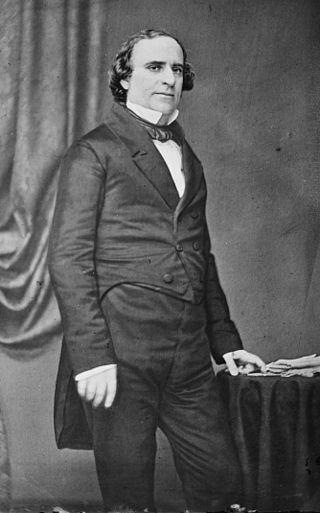
David Levy Yulee was an American politician and attorney who served as the senator from Florida immediately before the American Civil War. A secessionist and slaveowner, he also founded the Florida Railroad Company and served as president of several other rail companies, earning him the nickname of "Father of Florida Railroads."

Swampoodle was a neighborhood in Washington, D.C. on the border of Northwest and Northeast in the second half of 19th and early 20th century. This neighborhood is no longer known as Swampoodle and has been replaced in large part by NoMa.
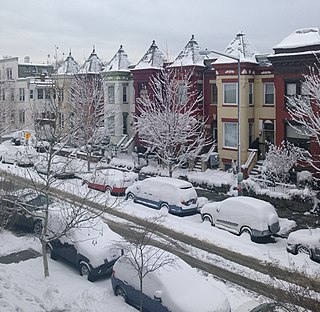
Bloomingdale is a neighborhood in the Northwest quadrant of Washington, D.C., less than two miles (3 km) north of the United States Capitol building. It is a primarily residential neighborhood, with a small commercial center near the intersection of Rhode Island Avenue and First Street NW featuring bars, restaurants, and food markets.

Massachusetts Avenue is a major diagonal transverse road in Washington, D.C., and the Massachusetts Avenue Historic District is a historic district that includes part of it.

16th Street Northwest, briefly known as the Avenue of the Presidents, is a prominent north-south boulevard in Washington, D.C., located in Northwest D.C. The street was laid out as part of the 1791 L'Enfant Plan, which served as the original blueprint for the city. The street begins just north of the White House, across from Lafayette Square in the President's Park, and continues north along the Washington meridian until Blair Circle.

Jacob Harold Gallinger, was a United States senator from New Hampshire who served as President pro tempore of the Senate in 1912 and 1913.

Henry Clay Hansbrough was a United States politician who served as the first United States Representative from North Dakota, as well as a Senator from North Dakota.
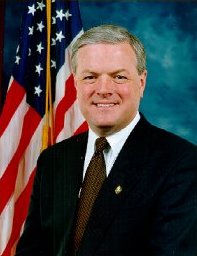
Edward Allan Pease is an American politician and lawyer from Indiana. He is a former Republican member of the United States House of Representatives, serving two terms from 1997 to 2001,
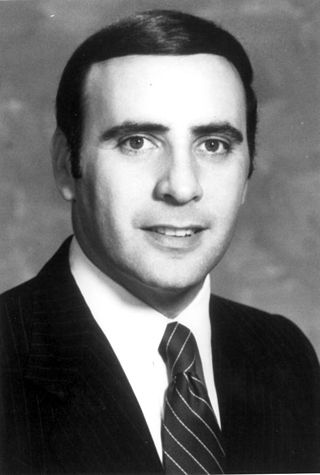
Daniel Mica is an American politician who was a U.S. representative from the state of Florida.
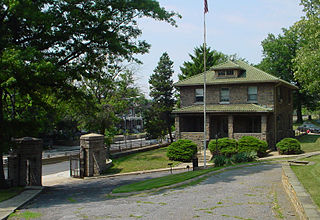
Prospect Hill Cemetery, also known as the German Cemetery, is a historic German-American cemetery founded in 1858 and located at 2201 North Capitol Street in Washington, D.C. From 1886 to 1895, the Prospect Hill Cemetery board of directors battled a rival organization which illegally attempted to take title to the grounds and sell a portion of them as building lots. From 1886 to 1898, the cemetery also engaged in a struggle against the District of Columbia and the United States Congress, which wanted construct a main road through the center of the cemetery. This led to the passage of an Act of Congress, the declaration of a federal law to be unconstitutional, the passage of a second Act of Congress, a second major court battle, and the declaration by the courts that the city's eminent domain procedures were unconstitutional. North Capitol Street was built, and the cemetery compensated fairly for its property.
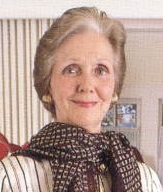
Rhea May Chiles was First Lady of Florida from 1991 to 1998 during the tenure of her husband, Governor Lawton Chiles. In 2009, she was designated a Distinguished Floridian by the Florida Economics Club at an event hosted by former Florida Supreme Court Chief Justice Major B. Harding and keynoted by former United States Senator Sam Nunn.

North Capitol Street is a street in Washington, D.C. that separates the Northwest and Northeast quadrants of the city.
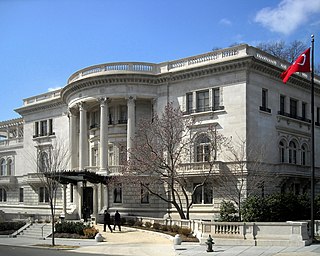
George Oakley Totten Jr., was one of Washington D.C.’s most prolific and skilled architects in the Gilded Age. His international training and interest in architectural decoration led to a career of continuous experimentation and stylistic eclecticism which is clearly evident in many of his works. The mansions he designed were located primarily on or near Dupont, Sheridan, and Kalorama circles and along 16th Street, N.W., near Meridian Hill. Most now serve as embassies, chanceries, or offices for national or international organizations, their important public or semi-public functions, combined with their urbanistically integrated close-in locations, make them particularly visible exemplars of Washington's peculiar mixture of turn-of-the-century political and social life.

The Embassy of Chile in Washington, D.C. is the diplomatic mission of the Republic of Chile to the United States. It is located at 1732 Massachusetts Avenue, Northwest, Washington, D.C., in the Embassy Row neighborhood. The embassy has been located there since 1973. The building now occupied by the Chilean Embassy previously housed the Embassy of Bangladesh.
